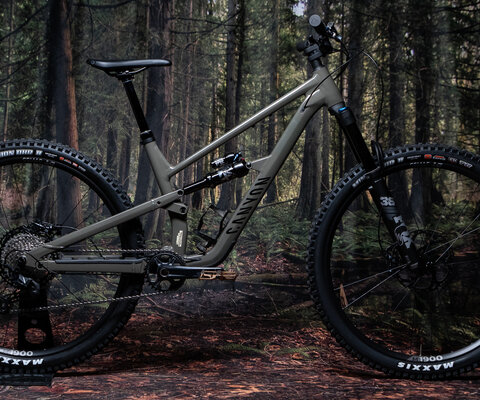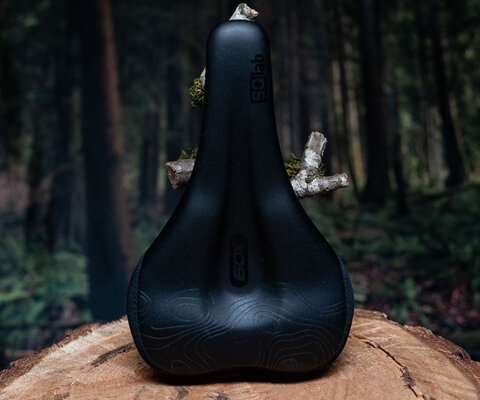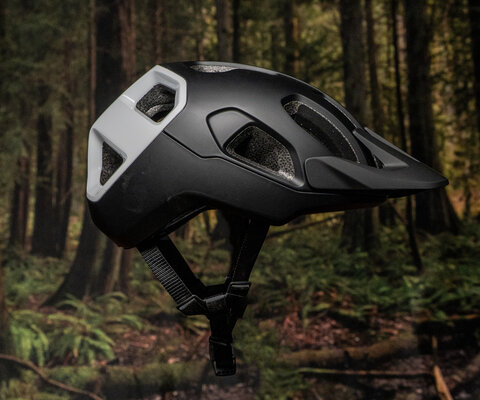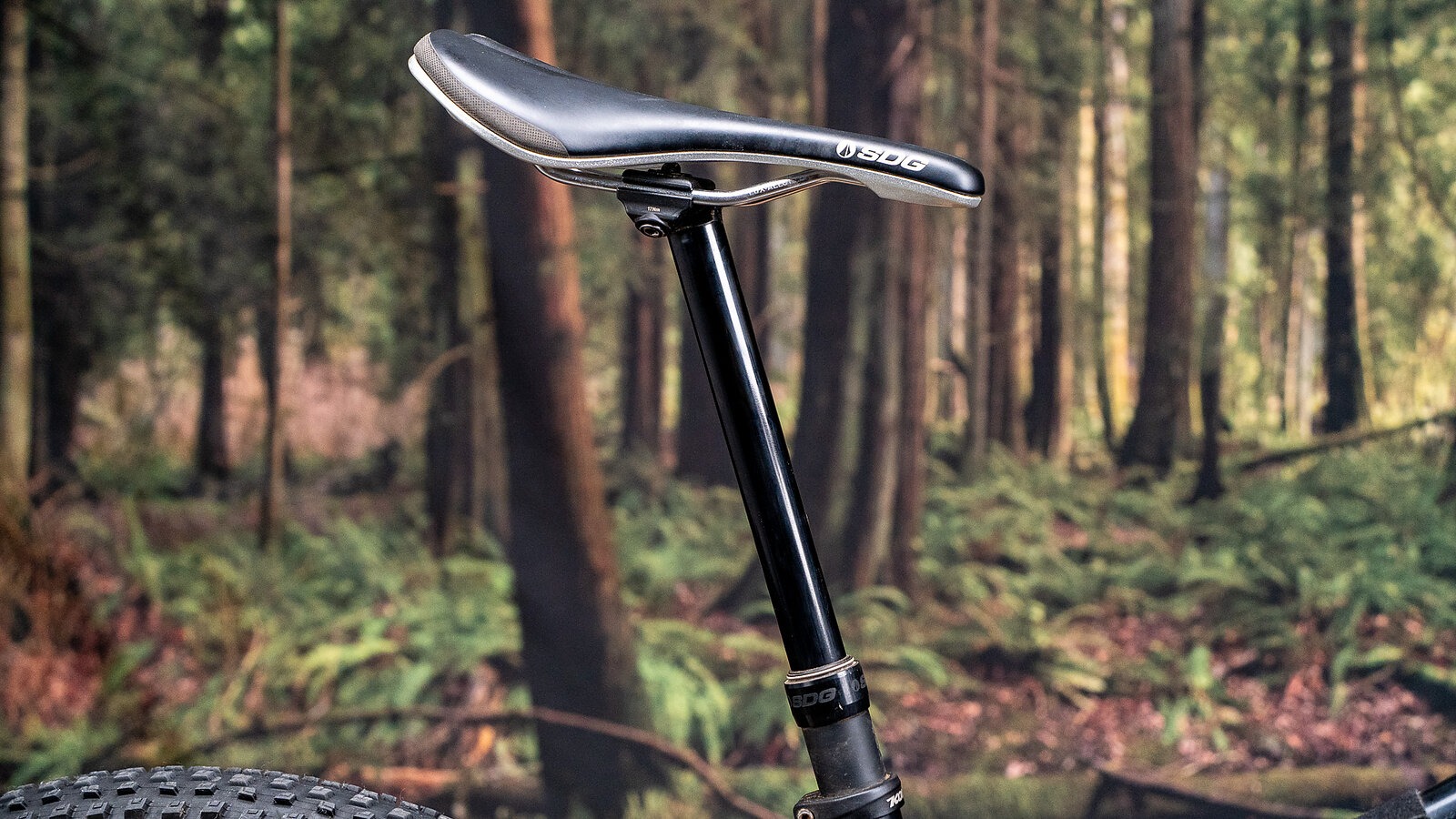
Long Term: SDG Tellis V2 Dropper Post Component Review
Words and Photos by Cy Whitling
Excellent performance through months of adverse conditions.
Most component reviews are relatively short-lived. They’re published when a product is released and, if they’re lucky, the reviewer has spent a few weeks riding and thinking about the part in question. Write up some first impressions, click “Post” and go on with your life. I did all that last April when SDG released the second version of its Tellis dropper post.
But then I kept riding it, and kept thinking about its performance, and its place in a saturated dropper post market, so I’m back, nearly a year later, with a reliability update and new revelations.
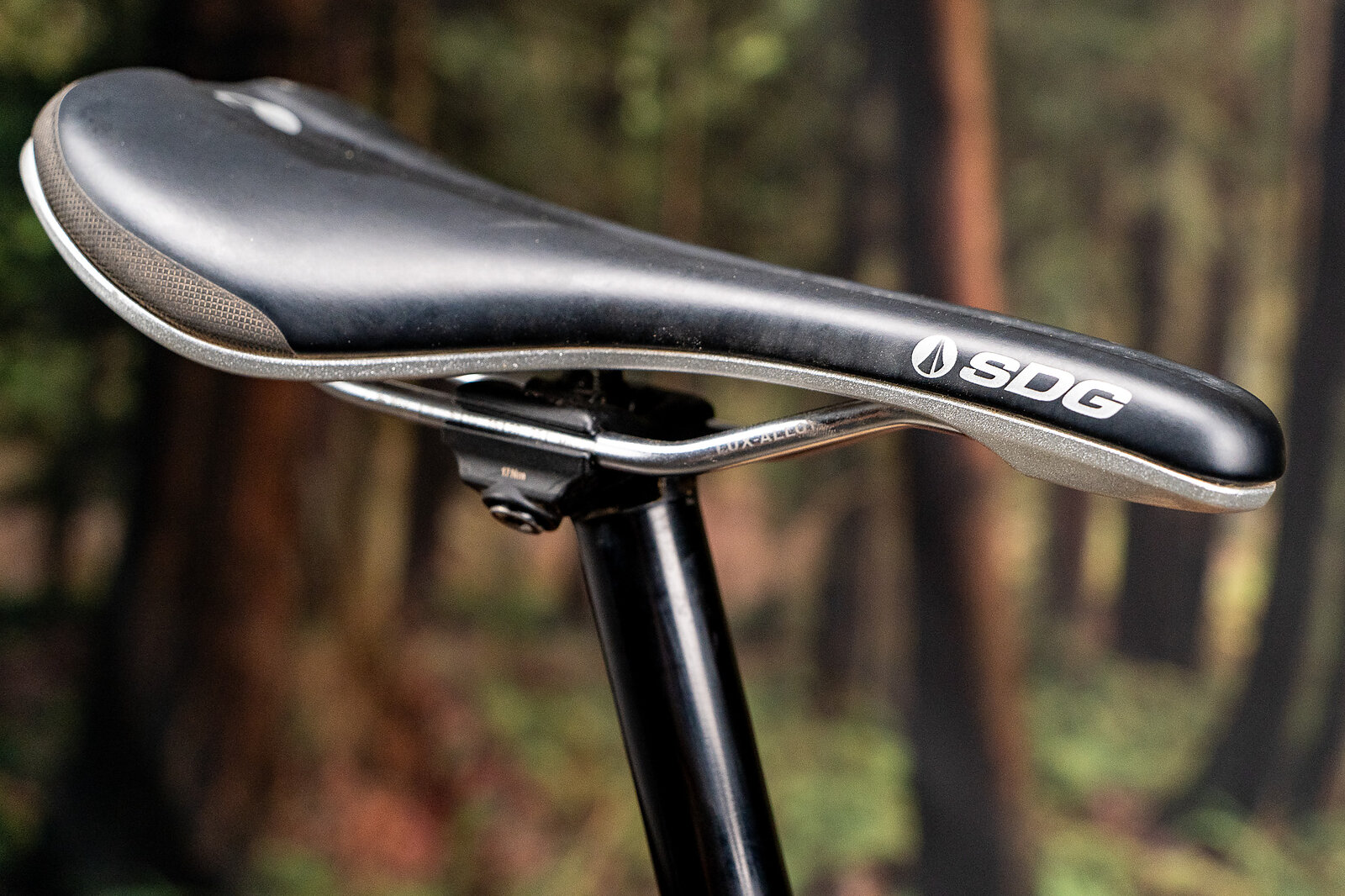
SDG Tellis V2 Overview
- Size Tested: 31.6 mm x 200 mm
- Measured Weight: 643 g
- Sizes Available: 30.9, 31.6, and 34.9 mm diameter; 75, 100, 125, 150, 170, 200, and 230 mm lengths
- Shimable by 5, 10, or 20 mm
- MSRP: $199-$224 depending on size
When SDG launched the Tellis V2 they touted a number of key upgrades over the previous version: it uses a unique saddle clamp design which makes it very easy to adjust your saddle and swap saddles out, it has a lower stack height, and is available with more drop than the previous version, and it has an updated bushing and seal system that should make it more reliable.
Those last two points are pretty universal when it comes to new dropper posts. Everyone is trying to fit more drop into a shorter package, and everyone wants their dropper posts to last. In that broader pantheon of dropper posts, the Tellis V2 sits on the more affordable end of the spectrum at $200. It’s a common OEM spec on complete bikes, and it’s one of the cheaper options if you’re trying to get more drop under your saddle. So by the numbers alone, the Tellis V2 is a worthy, if somewhat uninspiring, option in a crowded market. But the last ten months on the Tellis have left me convinced that it stands out from the crowd in a few key ways.
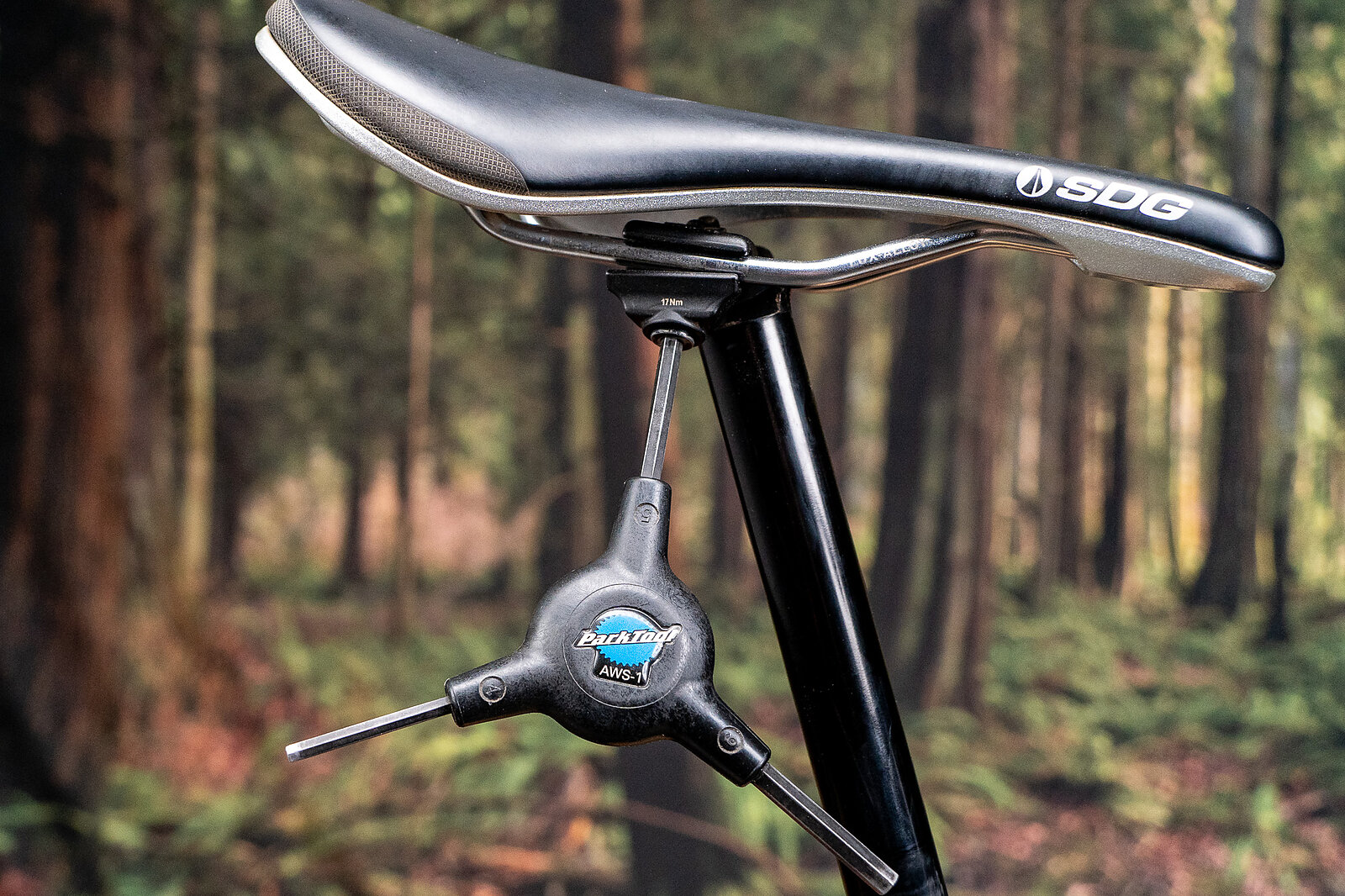
Saddle Clamp
Visually, the most striking thing about the Tellis is its clamp. It uses two bolts, just like most other seatposts, but they are situated on the sides of the head, not the front and back. This layout is reminiscent of SDG’s fixed-post I-Beam system, and works very well. It’s easier to adjust trailside, and it’s easier to swap saddles into and out of than any other dropper post I’ve used, by a healthy margin.
For all of last summer, my Tellis jumped from review bike to review bike, as I swapped it in for stock posts with inadequate amounts of drop. The clamp layout makes it incredibly easy to dial in saddle orientation for various seat tube angles with a multitool, instead of having to run home or carry a normal hex wrench. Similarly, it eliminates the fiddle factor of trying to get bolts to thread into barely-suspended nuts in the upper clamp plate that most posts use. This system is great. No creaks, no weird loosening, no frustration, just seamless installation and adjustment.
Of course, that matters most if you are routinely swapping the dropper between bikes and saddles, but it’s still a compelling case for a new method of saddle clamping.
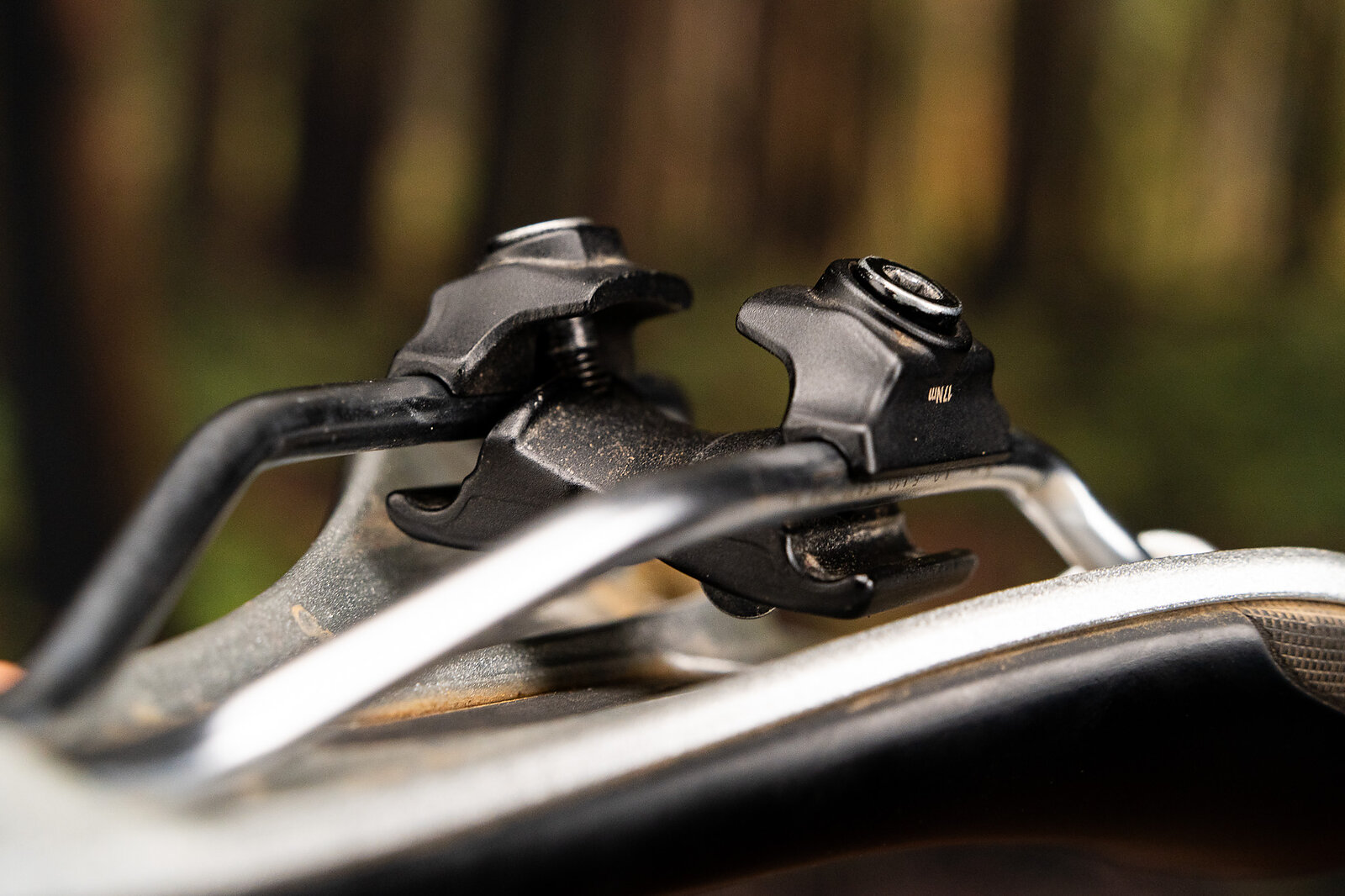
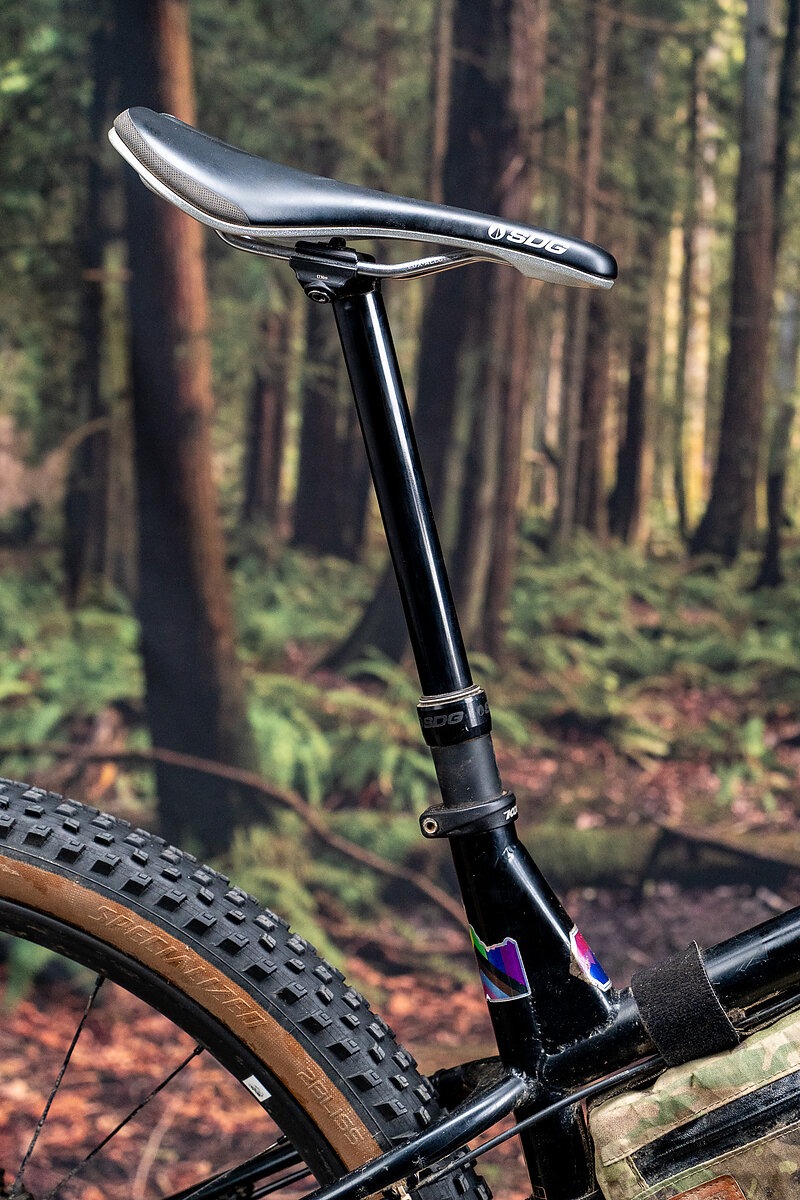
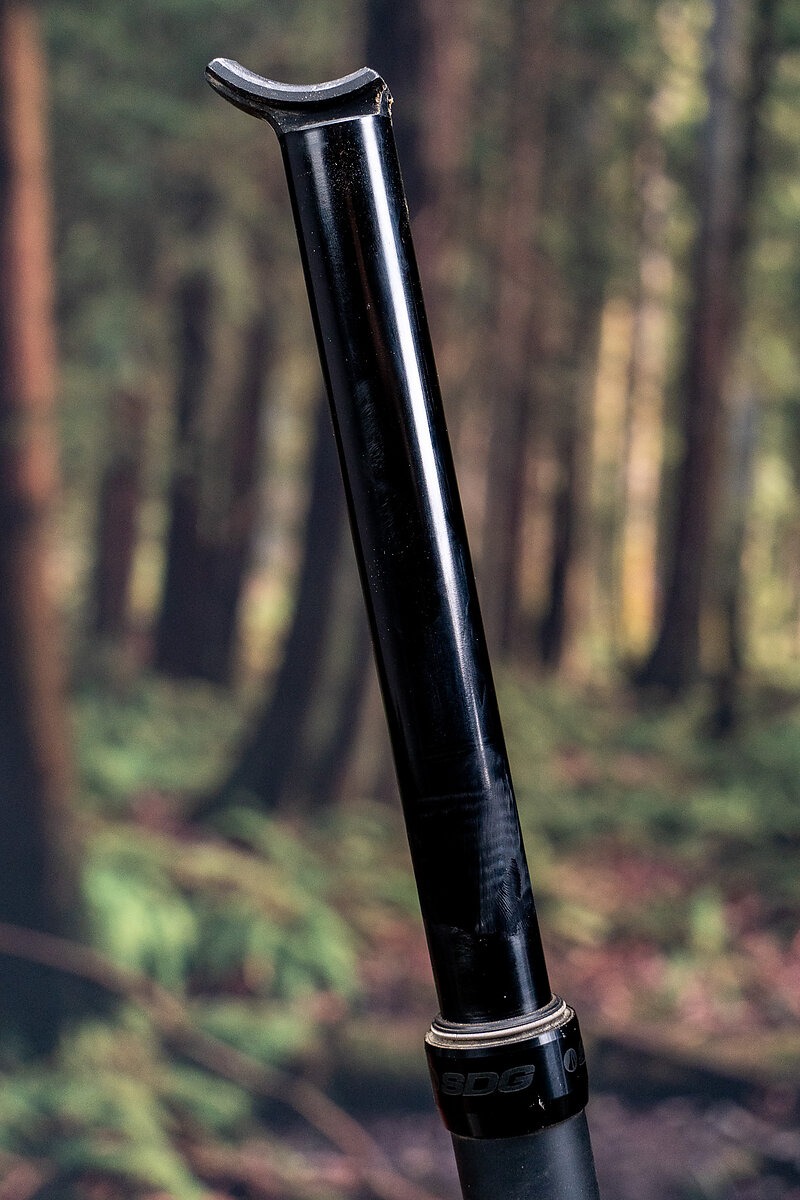
Stack Height and Clearance
The flipside of that clamp design is that it doesn’t allow for quite as short of a total package as some other designs on the market, but SDG did manage to take 10 millimeters off of the stack height of the old Tellis V1, as well as make the actuator 5 millimeters shorter. That means the Tellis V2 is a little taller than something like the OneUp Dropper V3 but isn’t radically outside the realm of normal.
If you’re a shorter rider on a bigger frame, or trying to push the absolute limits of length of dropper post you can match to your legs and bike, the Tellis probably won’t be the best post for you. But, if you’ve got some wiggle room, SDG has put together a very comprehensive clearance chart, and they include 5, 10, and 20-millimeter travel shims that are easy to install and let you dial in your drop.
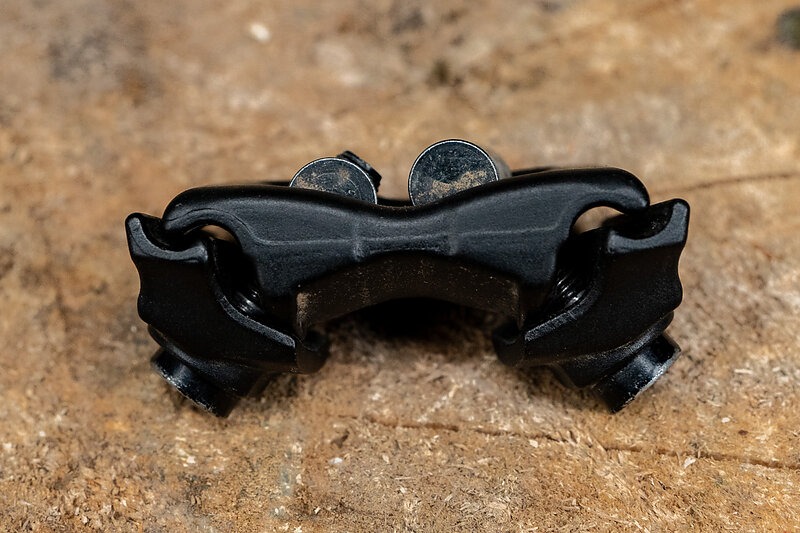
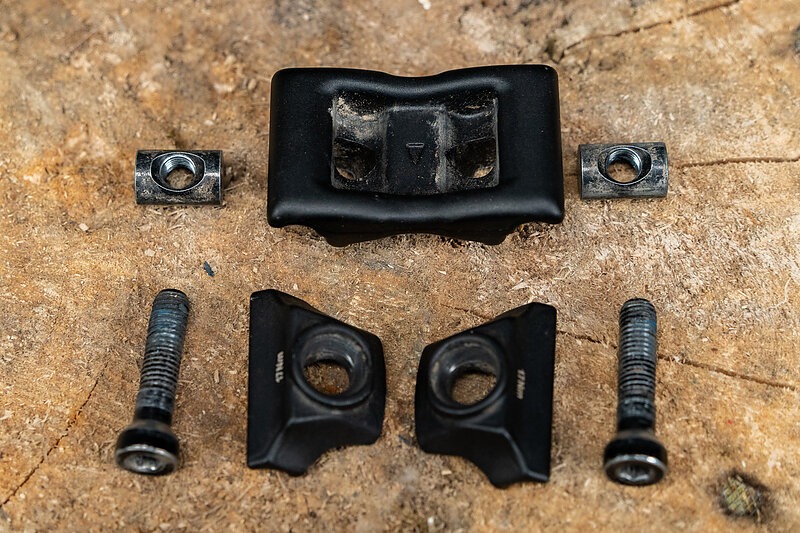
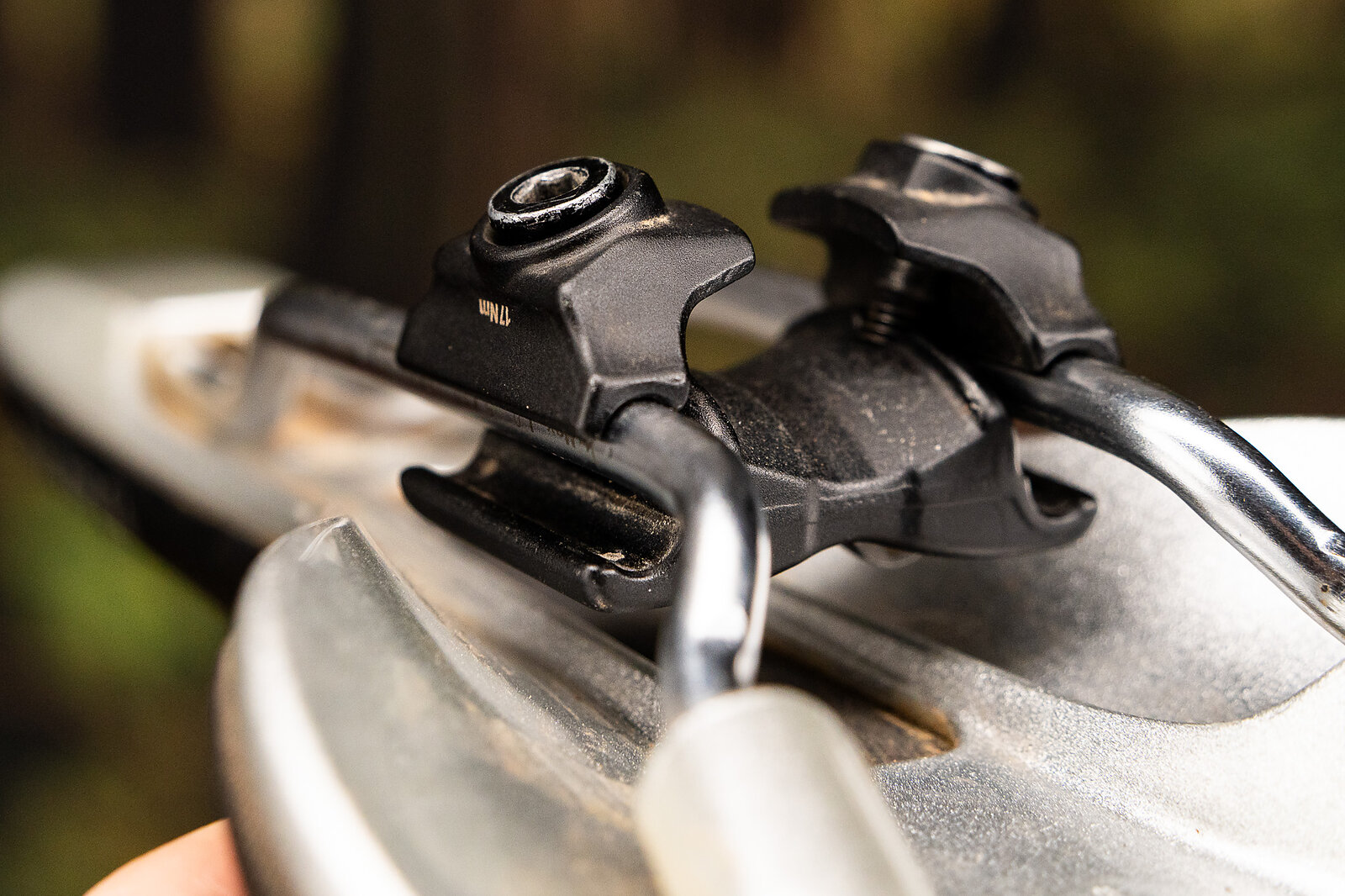
Reliability
When I first installed the Tellis V2 I noticed that its action was not the smoothest I’ve used. It was fine, but not great. The lever feel wasn’t the lightest or most definitive, and there was a low squelching sound when the post moved. It was totally adequate, but wasn’t quite on par with some other more expensive droppers new out of the box. However the big story here, and the motivation to write this update is that the Tellis V2’s performance hasn’t really degraded. It still works as well as it did right out of the box, while those other, more expensive droppers have needed services and refreshes, and still don’t feel as good as they did when they were brand new.
SDG touts their focus on reliability with the Tellis V2. It uses a bigger 26-millimeter stanchion, along with a Trelleborg seal, new IGUS bushing, and two-part polycarbonate and copper keyway system. I am a large man (200 pounds) who is hard on seatposts. I run my saddle forward in the rails, pointed down, so much of my mass is pushing back, against the seatpost, instead of down through it. I’ve broken more than my fair share of saddles, and develop play in my dropper posts quickly.
I’ve also been exceptionally hard on the Tellis V2. All summer it bounced from review bike to review bike. Then, in September, I installed it on my hardtail. This is the bike I ride when I do not want to think about bike maintenance. I rode it in the snow, in the mud, in 20° F temps, and I rarely cleaned, and never maintained the dropper post. Through it all, it kept performing as well as it did out of the box.
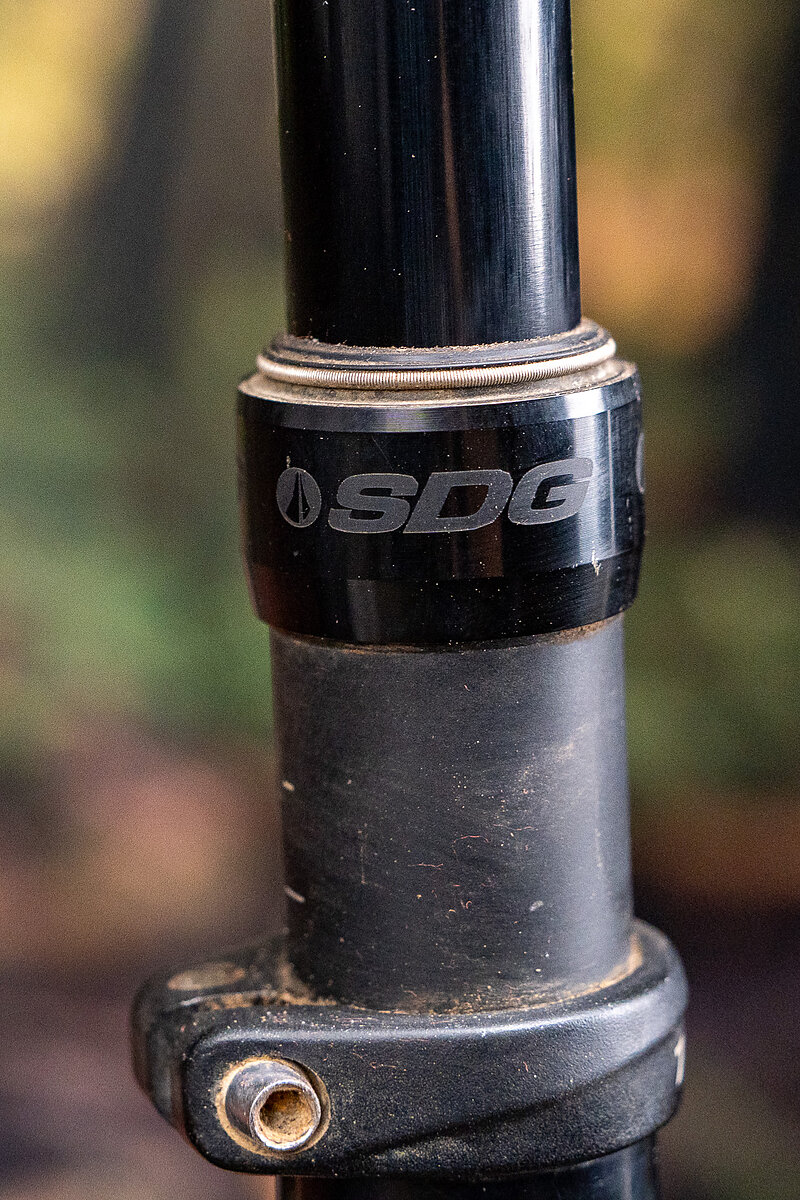
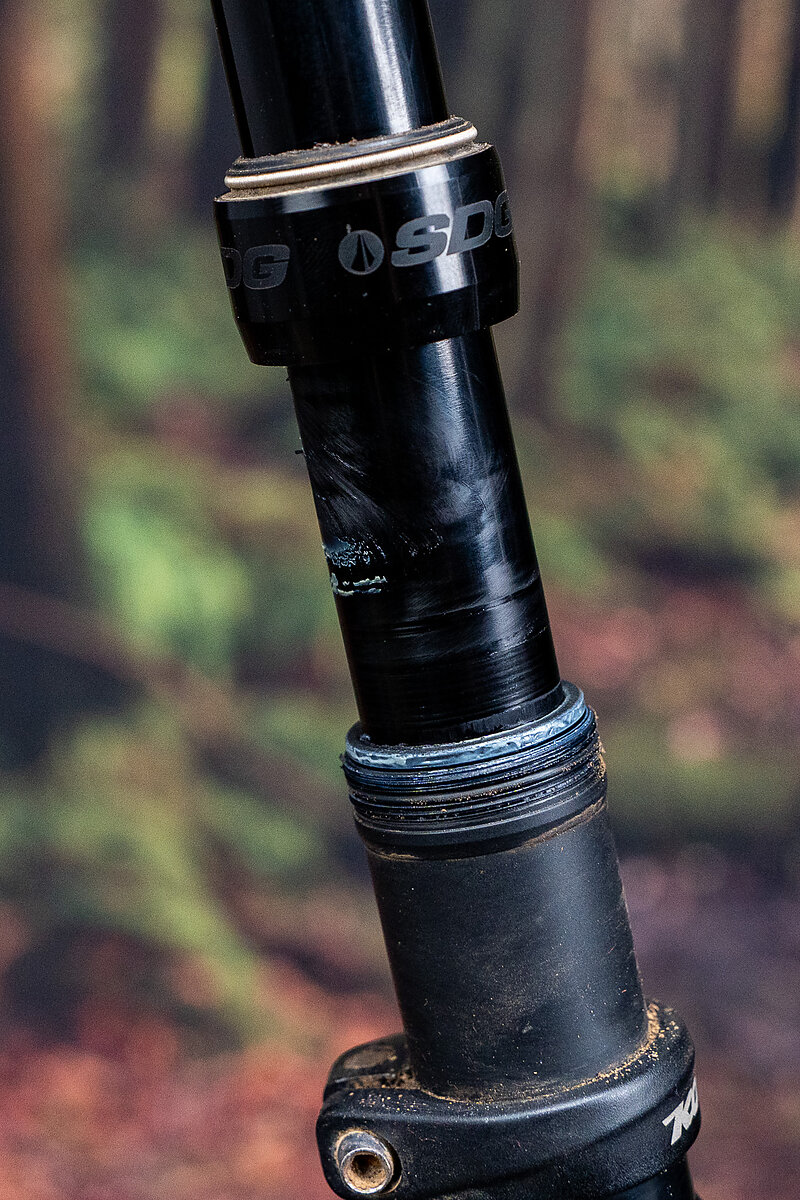
SDG has put together an excellent collection of videos on how to do a quick lube, 60-hour service, and 120-hour service. I have done none of those things, and am closing in on the 100 hour mark on this dropper. In that time, I’ve refreshed my OneUp V2 dropper twice, and it’s still slow and sticky in the cold. I have a Fox Transfer on another bike. It’s only a few months old, and it costs about $150 more than the Tellis, but it’s sticky and has much more play after much less abuse.
Out of the box, the Tellis didn’t feel as nice as the OneUp, Transfer, or BikeYoke Revive. But after months of abuse, it’s degraded much less than any of those other, more expensive options. I’ll gladly trade that initial “premium” feel for long-term durability.
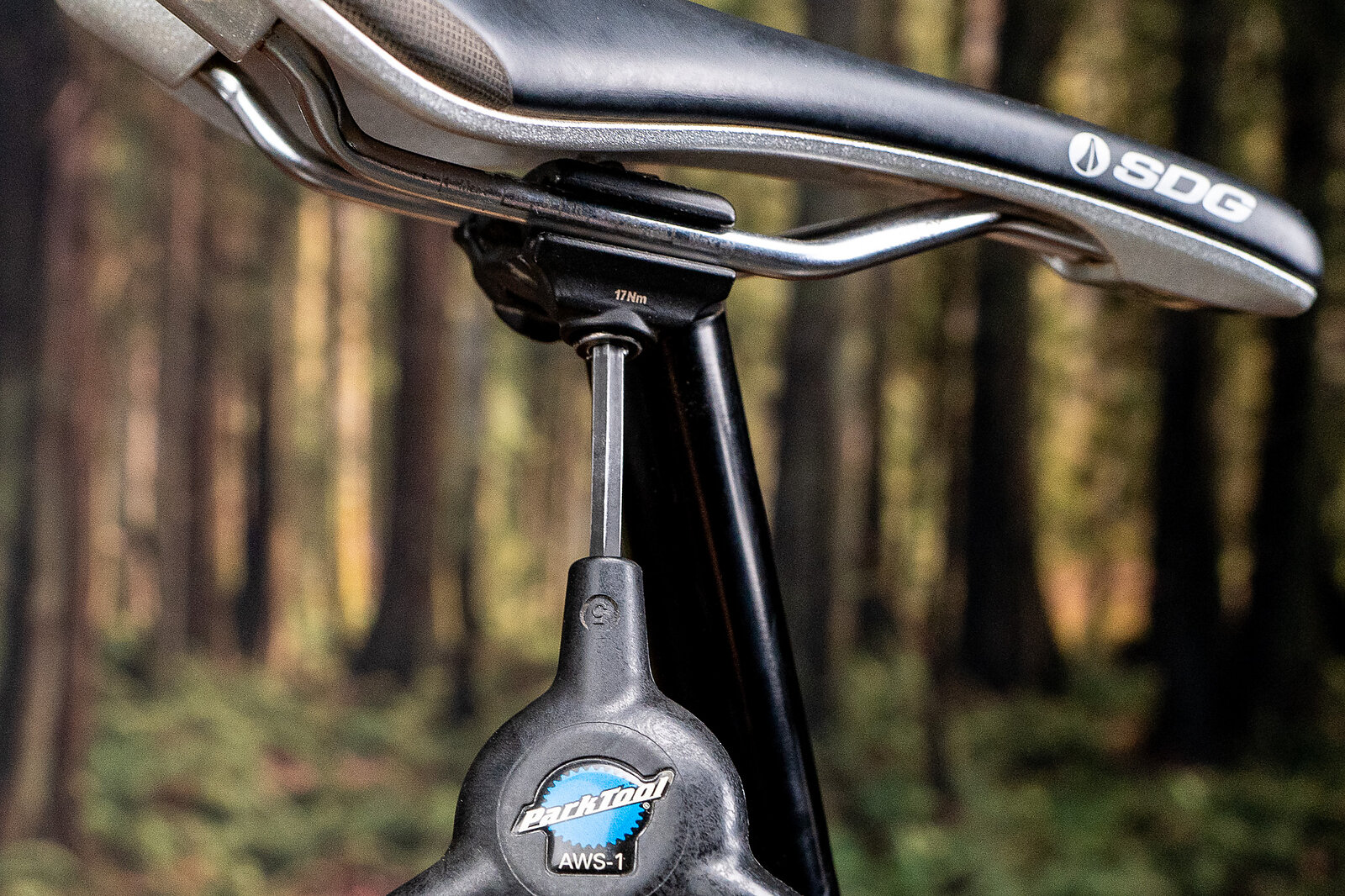
For Now
When it launched, the Tellis V2 seemed like another run-of-the-mill dropper. Sure, the clamping mechanism was unique, and excellent, but maybe not quite enough to set it apart from the pack. But the more I ride it, the more I’m impressed with its durability and long-term performance. It just plain works, which is what most of us are looking for from our dropper posts. So if you want to install a dropper post on your bike, and then just forget about it, the SDG Tellis V2 should be on your short list.
SDG Tellis V2
MSRP: $199-$224 USD
Learn More: SDG Tellis V2
